With Contributions from Oriana Tickell, iOpener Director of Coaching Programs & Science of Happiness at Work™, and Chris Cook, Founder of Capiche
Interview conducted by Melissa L. Michaels, Capiche Contributor/Strategic Partner, Michaels & Michaels Creative, LLC
In 2003 when Jessica Pryce-Jones founded iOpener Institute for People and Performance, the Science of Happiness at Work™ was just a ripple in the sea of business research. Today, it is a tidal wave that has transformed organizational development. Jessica’s 2010 book, Happiness at Work: Maximizing Your Psychological Capital for Success, played a pivotal role in creating the science of happiness field (a topic we have frequently written about at Capiche), and the data proving the profitability of pursuing employee happiness has only continued to accumulate in the ensuing years. It was shortly after the publication of that book that Chris Cook became the only person in the Northwest accredited by iOpener Institute under Jessica’s mentorship.
Today, Jessica is spearheading a new enterprise (stay tuned for details in a future Capiche Conversations interview), but iOpener Institute continues to thrive, having helped as many as 60,000 people from organizations across 182 countries renew their culture while boosting employee happiness and productivity. Following is an interview with Operations Director Jonathan Hann with contributions from Director of Coaching Programs & Science of Happiness at Work™ Oriana Tickell. Chris Cook also shares a real-life example of her iOpener consulting in action.
Special Offer! Starting now until August 15, Chris is offering free iPPQ individual assessments with a coaching follow-up. Call 541.601.0114, email Chris, or use our Contact form to schedule your assessment.
 Q: How did a Canadian wind up living and working in Oxford, England?
Q: How did a Canadian wind up living and working in Oxford, England?
Jonathan: I had just finished my BMus at McGill University and was beginning to think about next steps. Around the same time, my partner got accepted to a master’s program at the University of Oxford. I tagged along for the adventure, landed a place in an orchestra as well as job to help cover the rent, and the rest is history!

Q: Describe the trajectory that took an oboe player with a BMus in music performance to a position as operations director of iOpener Institute?
Jonathan: One of my many passions is classical music, but I’ve always been inspired by social entrepreneurship, community development, labor relations, and the ability to make a positive impact. Much of that drive was instilled in me by Peter Frampton, a friend and mentor whom I worked with at The Learning Enrichment Foundation. He also showed me how important it is that your values are aligned with your work. When I saw the job posting for iOpener, that was what I looked for. Seeing that the values matched, I decided to apply.
Q: You bring a broad range of experience to your present role, including investment consultant; account executive; events and entertainment coordinator; and childcare research and financial analyst. How did these various posts prepare you for your current responsibilities?
Jonathan: In the learning and development space, it’s important to be constantly curious—curious about what’s possible and happening in various industries. Having a broad range of experiences is both a product of my curiosity and part of what sparks it, so it helps with my current responsibilities. It’s also helped me learn how to juggle—not literally, though.
Q: Haha. Tell me about iOpener Institute and how this international consultancy firm serves organizations and their employees.
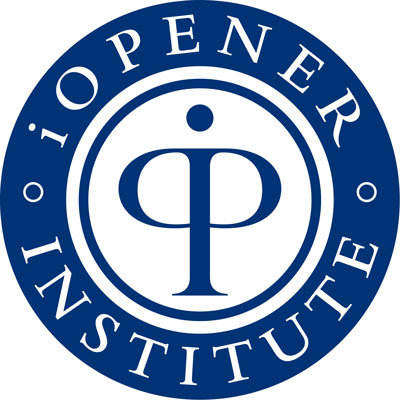 Jonathan: We make leadership, learning, and life better—both for our clients and our team—by helping everyone find the tools they need and the capability within themselves to achieve their potential. We do this by getting under the skin of any problems and bridging the knowing-doing gap in our programs, interventions, and research.
Jonathan: We make leadership, learning, and life better—both for our clients and our team—by helping everyone find the tools they need and the capability within themselves to achieve their potential. We do this by getting under the skin of any problems and bridging the knowing-doing gap in our programs, interventions, and research.
Q: You became operations director after nearly three years serving as senior project manager, so you’ve been at iOpener for over six years now. What it is like working at iOpener? How does it model the principles of a happy workplace?
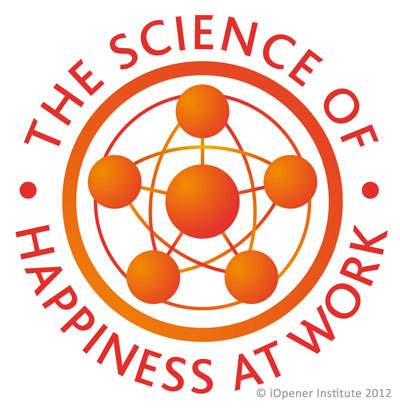 Jonathan: We do our best to hold ourselves accountable in the same way we would hold our clients accountable, and that’s grounded in the Science of Happiness at Work™. Sometimes holding ourselves to that high standard can get difficult, but by having those conversations, we can ensure we can constantly grow as a team. And I appreciate the freedom that model gives us to explore and change. Ultimately, no two days are the same, and we get to work remotely and collaborate with consultants and teams around the globe to create actionable change. That makes me happy.
Jonathan: We do our best to hold ourselves accountable in the same way we would hold our clients accountable, and that’s grounded in the Science of Happiness at Work™. Sometimes holding ourselves to that high standard can get difficult, but by having those conversations, we can ensure we can constantly grow as a team. And I appreciate the freedom that model gives us to explore and change. Ultimately, no two days are the same, and we get to work remotely and collaborate with consultants and teams around the globe to create actionable change. That makes me happy.
Q: iOpener offers a free iPPQ Happiness @ Work assessment to individuals. As an accredited practitioner, Chris Cook is available to provide coaching to individuals and consulting to organizations who wish to take advantage of this extraordinary tool. How does the iPPQ (People & Performance Questionnaire) help both individuals and organizations improve their happiness at work?
Jonathan: Let me give you an example. An organization came to us with a big strategic problem. They were having trouble retaining business-critical employees, and this was having a devastating effect on their ability to grow. They simply couldn’t take on more client work and were in danger of over-trading. Internally, there were problems scoping projects, meetings milestones, and delivering quality outcomes for their clients. The business was unable to expand because they were losing talent fast. That meant every team was pretty much in permanent crisis, so our goal was to help them improve this turnover number.
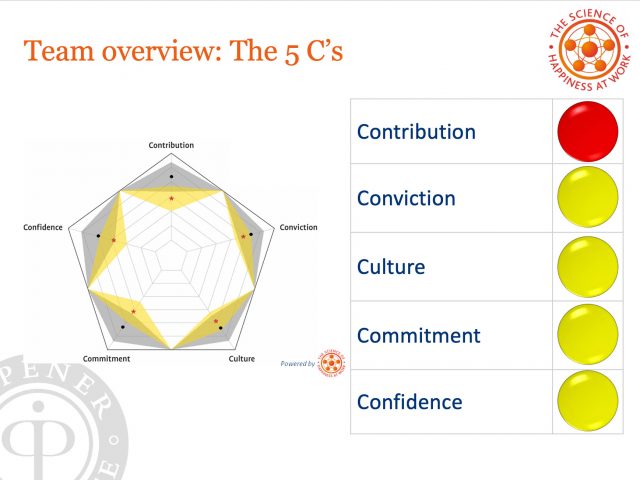
To aid with employee retention, we:
- Assessed the whole organization using our research-driven tool, the iOpener People & Performance Questionnaire (iPPQ).
- Analyzed the data to see what worked and what could work better both at a team and organizational level.
- Ran focus groups to flesh out some of the internal issues that were hampering growth.
- Coached the board and senior leaders using our proprietary 360 tool, which aligns with individual iPPQ reports.
- Ensured the people strategy was aligned with the organizational strategy.
- Realigned some of the HR processes to ensure they were based on what worked well and what could work better.
- Helped leaders implement the refreshed and realigned HR processes.
- Worked with HR to plan and then deliver leadership development aligned with the Science of Happiness at Work™.
- Ensured knowledge transfer into the organization so that HR, leaders, and managers could be self-sustaining.
- Found champions for every team so the approach would remain alive and at top-of-mind.
- Reassessed the organization.
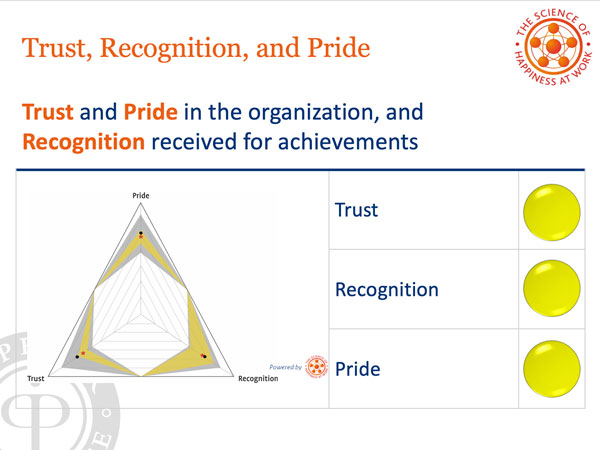
So what were the outcomes? When the project started, turnover of business-critical employees was running at 25%. Over 15 months, this halved to 12.5%. Not only has this reduction created much more stability and a platform for growth, but recruitment costs have fallen dramatically.
What matters more is the intangible effect on the organization’s social networks. Real-time relationships and therefore trust within and between teams has increased significantly because there is a much greater sense of stability and progress.
A further positive outcome is the language of the organization has changed. Employees and leaders are using the terminology of the Science of Happiness at Work™. This means conversations are easier because there is a framework and language, where before there wasn’t. And that means it’s much easier to have new, deeper, and potentially more meaningful interactions. When the shape of language changes, you open up different conversations, cultures, and outcomes. And to do that through a positive approach creates incredible cohesion, which is something all organizations need in today’s uncertain world.
Q: Chris Cook says of the iOpener tools and research, “I find the work extremely powerful because it’s not about what your employer does for you but about what you bring to the table: the 5 C’s.” What are the 5 C’s?
 Oriana: Culture, Conviction, Commitment, Confidence, and Contribution. The 5 C’s come together to create the model and show how happiness at work is structured.
Oriana: Culture, Conviction, Commitment, Confidence, and Contribution. The 5 C’s come together to create the model and show how happiness at work is structured.
- Culture is about having a feeling of fit with the organization.
- Conviction is about the short-term and can be influenced by any current situation, such as, “My boss hates me,” or, “I hate my boss,” which will obviously have an immediate impact on performance.
- Commitment is long-term and is about feeling committed despite any short-term obstacles simply because we believe that work has a sense of purpose and we are making a difference. This distinction often makes sense and helps people make solid decisions about their careers.
- Confidence is about levels of personal confidence.
- Contribution is about an individual’s feeling of contributing to something bigger than themselves and sense that the organization also contributes to the individual.
Balance between the five elements will create well-being for any individual, and the particular formulation is highly personal.
As you mention, happiness at work requires input from both sides. Individuals can only create sustainable well-being for themselves through the 5 C’s when the organization has the right factors in place for this to happen.
When we look at the bigger picture of creating the right environment for happiness at work, we have to address it at all levels of an organization—top-down and bottom-up. Misery is contagious wherever you find it.
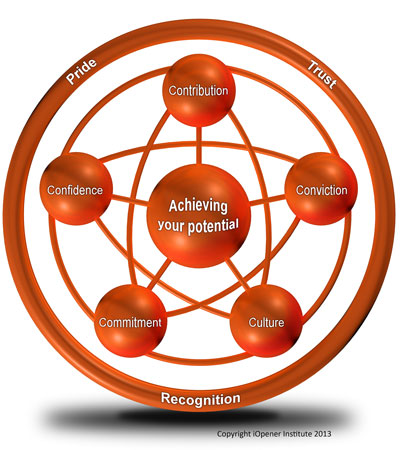 Q: And how do pride, trust, and recognition fit into the equation?
Q: And how do pride, trust, and recognition fit into the equation?
Oriana: Pride, trust, and recognition are the elements that wrap up the 5 C’s and hold them together. They are the questions to ask oneself—how proud am I of what I do, how much do I trust the vision of my leaders, and am I getting the recognition I need to keep me engaged and motivated? These factors help create an environment in which employees can thrive. And leaders can be directly involved in making sure they are present.
Pride, trust, and recognition underpin the 5 C’s and relate directly to achieving your potential, which is at the center of our model. For us, “potential” is an elastic term—when you are growing at work, achieving your potential will always be just out of reach. The goal posts move in a positive way, encouraging you to achieve that little bit more.
This, of course, is what companies want to see in their employees—that they really are stretching themselves and expanding their idea of what their potential is. The data helps us see what people need to feel in order to keep engaged and find their inner motivation.
Q: Chris, can you share a case study of an organizational culture iOpener has helped transform?
 Chris: Shortly after receiving my coaching training and accreditation by iOpener, I met with John Schweiger, Executive Chairman and CEO of Coming Attraction Theatres. We were friends and business associates, and when I told him of my new accreditation and affiliation with iOpener, he became very interested. The success of his organization was hugely dependent on the performance of its employees—from the internal operations to the external customer service teams. John shared with me that “something just wasn’t right,” and he was not able to put his finger on it.
Chris: Shortly after receiving my coaching training and accreditation by iOpener, I met with John Schweiger, Executive Chairman and CEO of Coming Attraction Theatres. We were friends and business associates, and when I told him of my new accreditation and affiliation with iOpener, he became very interested. The success of his organization was hugely dependent on the performance of its employees—from the internal operations to the external customer service teams. John shared with me that “something just wasn’t right,” and he was not able to put his finger on it.
We decided to assess the situation by having all of the management team take the iPPQ. We looked at the team report and saw a few areas that could be strengthened. John agreed to have me coach individuals (including himself) to help them strengthen elements that were detracting from their happiness (a direct correlation to their performance) and to conduct a series of team workshops specifically related to organizational issues around pride, trust, and recognition.
Of course, the team was a bit skeptical as none of them had ever been coached before (other than on a sports team), but they kept an open mind. About midway through our work together, the movie industry made a push to convert all theatres from “real” 35mm film to digital content. This meant installing new equipment and revamping operations at all of the company’s locations (for approximately 149 screens). The real kicker was it had to be done in less than 90 days to meet the timeline to premiere Thanksgiving/holiday releases—the biggest money-making season for the movie industry!
The good news is Coming Attractions Theatres did not miss a beat. All conversions were completed—successfully and ahead of schedule. John credits our work together for improving communication, accountability, teamwork, and turning an onerous change into a challenge all were prepared to dig in and meet.

Q: Why should a company worried about the bottom line care about happiness at work?
Oriana: Over time, what we see from our data is that when we compare the least happy with the happiest people, there are significant differences. The least happy think they will stay in their job for another 18 months. During that time, they will be less focused on task, take more days off, and dedicate less energy to their work. Not only are they less productive, but they plan on doing this for an extended period of time, which is costly for a company.

Q: Now more than ever, employers are paying close attention to their employees because there’s such a scarcity of good staff. There are Help Wanted signs everywhere; simultaneously, there are few management positions and opportunities for advancement. How does an organization find and then keep high-performing employees?
Oriana: A lot of people will stay with a company even if they’re unhappy. It’s better to have a job than not, but the minute they find something better, they’re out the door. Just because someone’s hanging in there doesn’t mean they’re happy and going to stay—especially high-performing people. They’ll still be high-performing but also highly motivated to look for a new job or company.
When you look at an individual iPPQ report, it is often clear what would need to change for the person to reclaim their well-being and productivity. And action can be taken. One client looked at his iPPQ and realized exactly what he felt was holding him back at work. He told us he had been planning to hand in his resignation that day and accept a job offer he’d received. With the insights he got from the report, he made the decision to stay. Within a couple of months, he’d made significant changes and subsequently became managing partner of the organization.
Especially now, as we emerge into what may be a radically different world at work, companies that pay attention to the well-being of their employees are well-positioned to retain their talent. Interestingly, what we have seen in our recent research is people really want to have opportunities to learn at work. When we compare the happiest at work and the least happy at work, people who say they have sufficient opportunity to learn at work are 29% happier and 17% more focused on task than their least happy counterparts. They also want to stay 27 months in their job. When we translate this to financials, the people who are both happy and feel they are learning at work will be generating nearly $10,000 more in productivity per year. These are the employees everyone wants to keep! They are happy, intrinsically motivated, and on a path of constant self-development, which will up their levels of contribution and productivity.







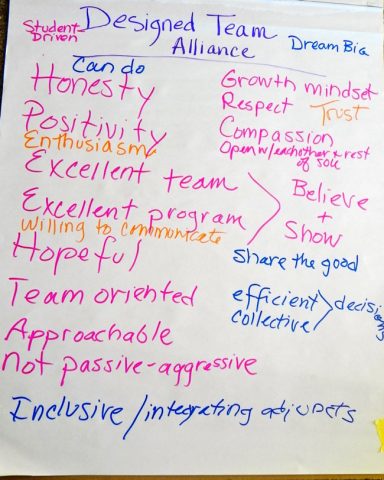 In the training I led last week, one of the values the team agreed on was no BS—and to call it if you see it. Just as important as creating a productive space is agreeing on how to handle conflict.
In the training I led last week, one of the values the team agreed on was no BS—and to call it if you see it. Just as important as creating a productive space is agreeing on how to handle conflict.






